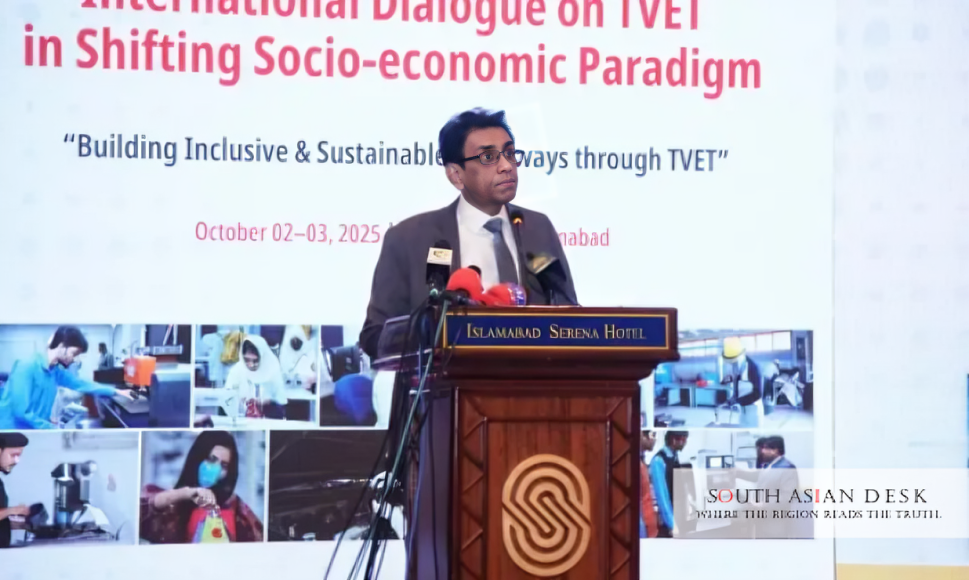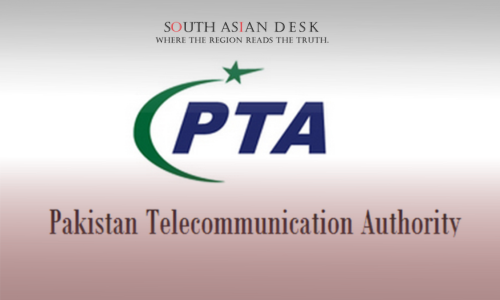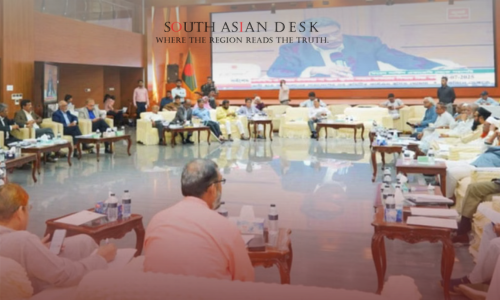ISLAMABAD, Monday, August 25, 2025, 4:35 PM – Pakistan’s government launched a major push to place Pakistan skilled workforce in international markets during a two-day dialogue in Islamabad. Federal Minister for Education and Professional Training Khalid Maqbool Siddiqui led the event, organised by the National Vocational and Technical Training Commission (NAVTTC) with partners including the European Union and British Council.
The initiative targets youth comprising 64% of the population, per United Nations data, to secure overseas employment and boost national development. Attendees from Germany, the UK, Bangladesh, Sri Lanka and the UAE discussed pathways for Pakistani talent. This move addresses unemployment while enhancing export of skilled labour.
Nut Graph: Boosting South Asia’s Remittance Economy
Pakistan’s drive into skilled workforce markets holds vital implications for South Asia. As remittances hit PKR 8.5 trillion last fiscal year, shifting from unskilled to skilled labour could double inflows, stabilising economies amid global slowdowns. Neighbouring nations like Bangladesh and Sri Lanka face similar youth bulges; Pakistan’s model offers a blueprint for regional skill exports, fostering stability and reducing migration pressures.
Pakistan Education Minister Drives Skilled Labor Export Opportunities
Federal Minister Khalid Maqbool Siddiqui opened the international dialogue by stressing the urgency of global integration for Pakistan’s skilled workforce markets. “Through this dialogue, we must find pathways to adjust our skilled Pakistanis into the global market,” he said. He linked vocational training to sustainable growth, noting UN figures show youth form 64% of Pakistan’s 240 million people. Equipping them with market-relevant skills could propel the country to economic powerhouse status.
The event built on recent government pledges. In a ministry press release, Siddiqui highlighted the Languages Training Programme under the Prime Minister’s Youth Skill Development initiative. Launched with NAVTTC and the National University of Modern Languages, it trains students in Chinese, German, Arabic, Japanese and Korean. Over 800 learners in Islamabad completed six-month courses, gaining cultural insights alongside language proficiency for international roles. “This programme is our promise to the young people of Pakistan. We will continue to provide them with tools to secure brighter futures, access better jobs, and compete on the international stage,” Siddiqui stated.
NAVTTC data underscores the scale. Its Takamol programme certified 75,000 workers for Gulf Cooperation Council jobs, focusing on construction, hospitality and IT. Additionally, 36,000 women acquired IT skills through the Prime Minister’s Youth Programme, opening digital career paths. Chairperson Gulmina Bilal Ahmad noted these efforts shift Pakistan from unskilled dominance abroad. “Currently, a large portion of Pakistanis are employed in unskilled labour markets,” she said during Nazeer Hussain University’s accreditation ceremony. That event aligned degrees with global standards via partnerships with GEMS Middle East and City & Guilds, aiming to certify youth for skilled labor export opportunities.
Government Targets White-Collar Shifts in Pakistan Skilled Workforce Markets
Federal Minister for Overseas Pakistanis Chaudhry Salik Hussain revealed last year saw 735,000 Pakistanis head abroad for work, up from prior years. Yet, 97% remain in blue-collar roles, per labour ministry figures. “We aim to send people for white-collar and management-level jobs as well,” Hussain told delegates. He cited Saudi Arabia as a priority, where 2.64 million Pakistanis work, mostly unskilled.
A bilateral agreement with Saudi Arabia on skills verification, signed earlier this year, streamlines certification for Pakistani talent. This aligns with Riyadh’s Vision 2030, emphasising health, education and infrastructure. Ambassador Ahmad Farooq warned competitors could claim shares if Pakistan delays training. “To achieve this, Pakistan needs to focus on improving its workforce by imparting training as per Saudi requirements,” he said at the Karachi Chamber of Commerce.
The education ministry’s new policy commits to training 1 million youth annually in technical fields. Rana Mashhood Ahmed Khan, Chairman of the Prime Minister’s Youth Programme, reported 600,000 youth and 700,000 firms registered on its portal. “This is the largest initiative of its kind in the region, empowering youth economically,” Khan added. Provinces collaborate to deliver skills matching industry needs, from AI to green energy.
International Partnerships Fuel Pakistan Education Minister Skilled Labor Export Opportunities
Delegates praised NAVTTC’s curriculum alignment with global standards. Philip Oliver, EU Deputy Ambassador, called youth skilling key to progress. Partnerships extend to China via CPEC Phase II, with joint AI and agriculture training. NAVTTC signed accords in Beijing to upskill thousands for project completion.
In Kazakhstan, recent talks offered technology transfer and joint ventures in tanning, leveraging Pakistan’s workforce. A Korea-Pakistan pact from June targets labour exports through enhanced vocational ties. Siddiqui termed skills education “a cornerstone of national economic strategy” during that signing.
These efforts address a domestic unemployment rate of 6.5% among graduates, per Pakistan Bureau of Statistics. By 2030, the policy projects 5 million skilled exports, generating PKR 2 trillion in annual remittances.
Background: Evolution of Pakistan’s Labour Export Landscape
Pakistan’s labour migration dates to the 1970s oil boom, when unskilled workers filled Gulf needs. Remittances peaked at PKR 8.5 trillion in 2024-25, funding 10% of GDP. Yet, brain drain concerns linger; the skilled push counters this by fostering return migration and knowledge transfer.
NAVTTC, revamped in 2022, now oversees 1,200 institutes training 500,000 annually. The Prime Minister’s programme, budgeted at PKR 50 billion, integrates digital platforms for job matching. Early wins include 10,000 placements in Belarus via safe corridor agreements.
What’s Next: Scaling Pakistan Skilled Workforce Markets
Upcoming includes a NAVTTC-led green skills summit in November, targeting climate jobs in Europe. Bilateral forums with UAE and Bangladesh aim for 200,000 placements by mid-2026. Siddiqui plans a national skills audit to pinpoint gaps.
As Pakistan skilled workforce markets expand, sustained investment could redefine South Asia’s labour dynamics, turning demographic dividends into enduring prosperity.
Published in SouthAsianDesk, October 3rd, 2025
Follow SouthAsianDesk on X, Instagram, and Facebook for insights on business and current affairs from across South Asia.






